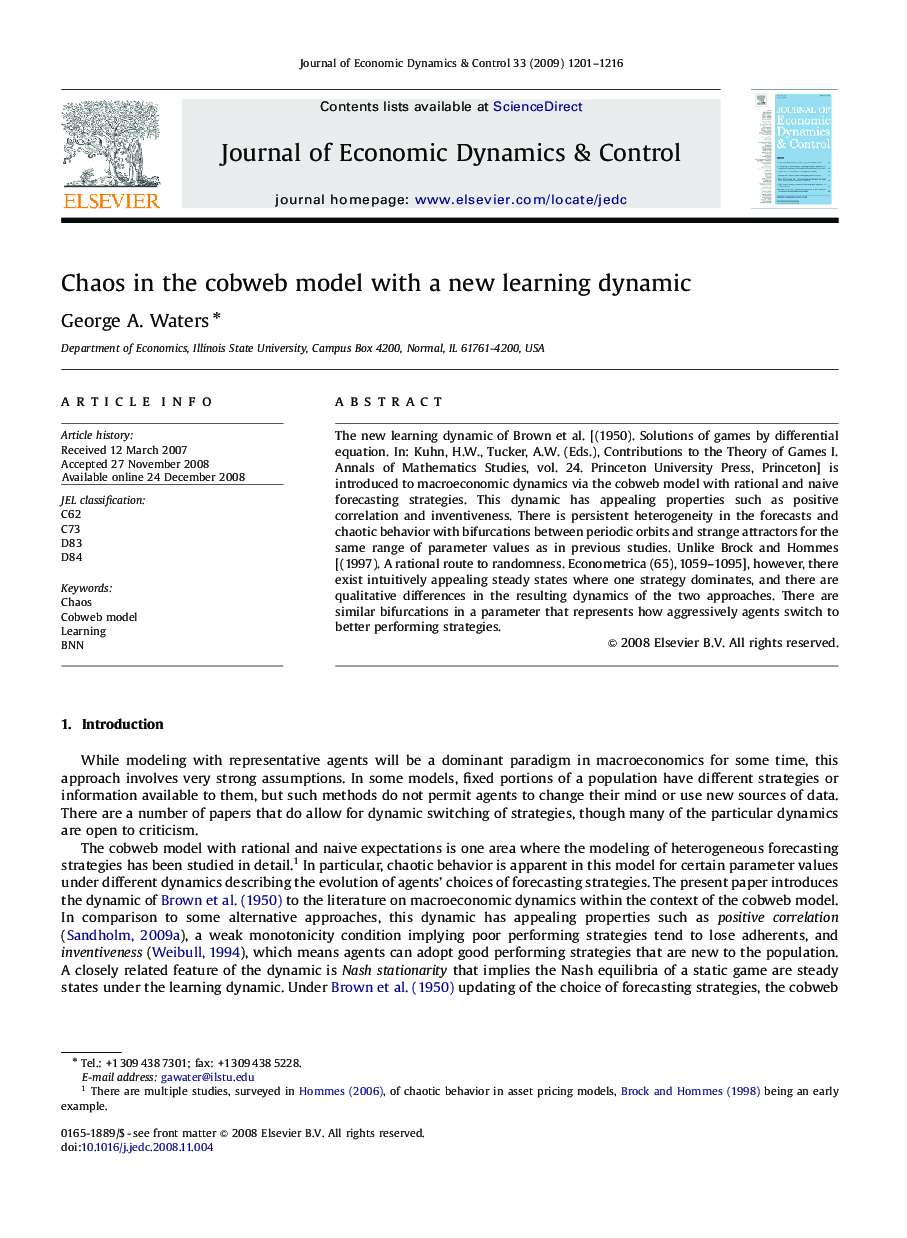| Article ID | Journal | Published Year | Pages | File Type |
|---|---|---|---|---|
| 5099134 | Journal of Economic Dynamics and Control | 2009 | 16 Pages |
Abstract
The new learning dynamic of Brown et al. [(1950). Solutions of games by differential equation. In: Kuhn, H.W., Tucker, A.W. (Eds.), Contributions to the Theory of Games I. Annals of Mathematics Studies, vol. 24. Princeton University Press, Princeton] is introduced to macroeconomic dynamics via the cobweb model with rational and naive forecasting strategies. This dynamic has appealing properties such as positive correlation and inventiveness. There is persistent heterogeneity in the forecasts and chaotic behavior with bifurcations between periodic orbits and strange attractors for the same range of parameter values as in previous studies. Unlike Brock and Hommes [(1997). A rational route to randomness. Econometrica (65), 1059-1095], however, there exist intuitively appealing steady states where one strategy dominates, and there are qualitative differences in the resulting dynamics of the two approaches. There are similar bifurcations in a parameter that represents how aggressively agents switch to better performing strategies.
Related Topics
Physical Sciences and Engineering
Mathematics
Control and Optimization
Authors
George A. Waters,
